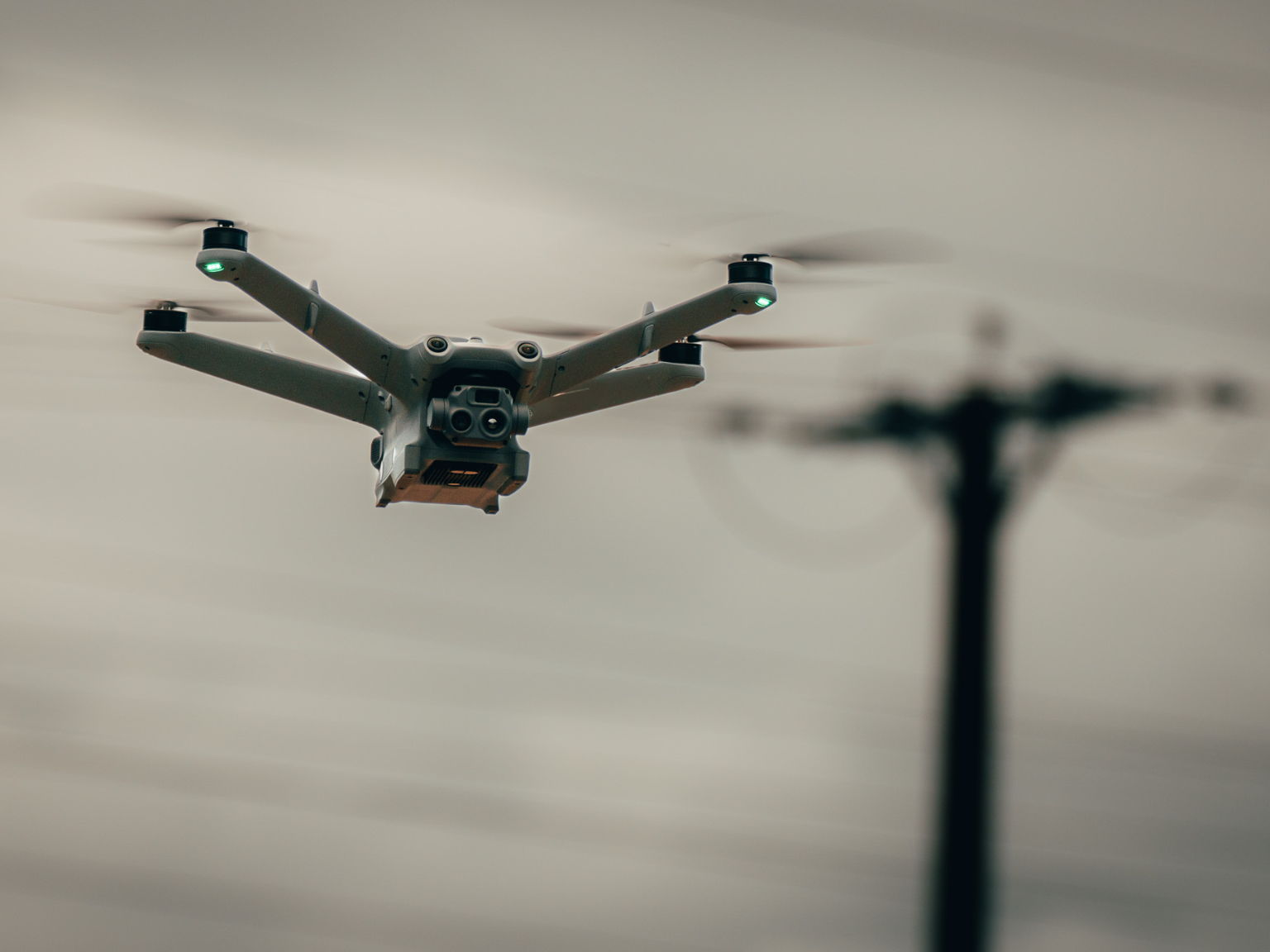
News
Published on 5 Dec 2024
James Willoughby
UK CAA Publishes New Atypical Air Environment Policy For BVLOS Drone Operations
The policy is described as a significant milestone for the future of drone flights.
A second version of the UK CAA's Atypical Air Environment policy has been released;
The new document updates references to Radio Technical Commission for Aeronautics standards - in relation to electronic conspicuity mitigation;
The AAE policy is designed to help unlock BVLOS drone operations in the UK.
The UK CAA (Civil Aviation Authority) has released a revised version of its Atypical Air Environment (AAE) policy concept - designed to help unlock BVLOS drone operations.
The Second Edition of CAP 3040 updates references to Radio Technical Commission for Aeronautics (RTCA) performance standards to RTCA DO-282B.
It states that drones operating within an AAE should be equipped with an ADS-B transmitter (single frequency – 978MHz UAT) and receiver (dual frequency – 978MHz and 1090MHz) or transceiver, and functioning in accordance with these RTCA DO-282B standards.
This update relates to electronic conspicuity, as part of mitigations to avoid a mid-air collision within an AAE.
The UK CAA says the policy concept marks a significant milestone for the future of drone operations - enabling drones to fly BVLOS by remaining at low heights close to infrastructure or buildings.
What Is The CAA's Atypical Air Environment Policy Concept
The policy concept was first published in October 2024, before the second edition was released at the start of December 2024.
The concept sets out the requirements for organisations wanting to operate drones beyond visual line of sight in an AAE.
It enables stakeholders to proceed with planning operations, in line with the CAA's thinking.
The concept will be constantly reviewed to align with technological developments and new evidence from operators.
What Is An Atypical Air Environment?
The UK CAA says there is no single definition for an AAE, however, it can be considered as a volume of airspace within which it can be reasonably anticipated that there will be a greatly reduced number of conventionally piloted aircraft due to the close proximity of specific ground infrastructure.
Because of this, operating within an AAE reduces the likelihood of a mid-air collision between a drone and manned aviation.
The following examples of what may be considered an AAE are to be used as a guide:
Within 100ft of any building or structure.
Within 50ft of a permanent, above ground level, linear structure. For example, a railway, road, or powerline.
Within the confines of private property at a height not exceeding 50ft. For example, an industrial site where security personnel use a UA for perimeter inspection.
The application process to operate within an AAE is initiated through the submission of an Operational Risk Assessment (ORA), proposing the full extent of the proposed activity.
The policy concept is a supporting document to the application process and only considers the air risk specifics of an AAE operation. It does not address ground risks and operators must set out mitigations, with these proposals being assessed by the UK CAA.
Addressing Mid-air Collision Risk In An AAE
While an AAE is designed to reduce the risk of a midair collision, the CAA acknowledges that this alone might not be sufficient mitigation.
Therefore, additional mitigation will usually be required. These include:
1: Pre-tactical Flight Route Notification
The operator must pre-notify their intended operating route or Area of Operation, and the process to achieve this must be described in the ORA. Initially - and at this embryonic stage - a NOTAM will be considered the default mechanism.
2: Electronic Conspicuity
The drone should be equipped with an ADS-B transmitter (single frequency – 978MHz UAT) and receiver (dual frequency – 978MHz and 1090MHz) or transceiver and functioning in accordance with the Radio Technical Commission for Aeronautics (RTCA) performance standards RTCA DO-282B.
The CAA and DfT are working with Ofcom to define permanent licensing arrangements for the use of 978 MHz/UAT.
3: High Intensity Anti-Collision Lighting
The drone operating within an AAE must be equipped with high-intensity anti-collision lighting, which is operating throughout the flight, day or night.
The CAA has not yet defined specific technical or operational requirements. In the absence of a UK standard, the CAA suggests that advice from the Federal Aviation Authority is currently best practice.
This advocates upwards-facing white strobe lighting, which is visible from three statute miles at night under clear conditions, and with a strobe rate of 40-100 cycles per minute.
4: Containment
Any UA operating within an AAE must be equipped with a technically robust containment solution to ensure a breach of the operational volume is mitigated as far as reasonably practicable.
5: Collision Avoidance
Pilots must make every effort to minimise a collision risk. This includes discontinuing the flight when continuing it may pose risk to another aircraft.
Summary
The UK CAA describes the recognition and adoption of an AAE within the UK as an innovative concept, designed to enable drone BVLOS operations by exploiting defined airspace environments that offer the potential for a reduced risk of a mid-air collision.
The Authority says that it will help applicants, and the CAA, determine what is acceptable as an AAE, and what operational, strategic, and technical mitigations may be necessary to operate within it.
You can read the full policy document here.
heliguy™ has an in-house OSC consultancy with regulatory specialists to help organisations prepare and submit BVLOS applications. Find out more, here.
